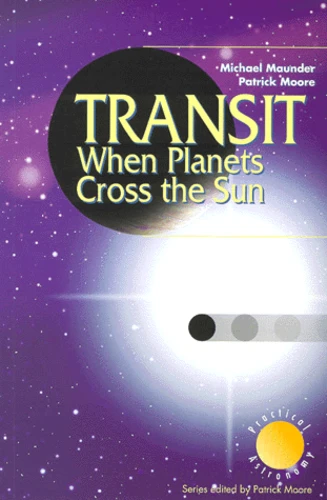TRANSIT.. When Planets Cross the Sun
Par : ,Formats :
- Paiement en ligne :
- Livraison à domicile ou en point Mondial Relay estimée à partir du 11 décembreCet article sera commandé chez un fournisseur et vous sera envoyé 10 jours après la date de votre commande.
- Retrait Click and Collect en magasin gratuit
- Livraison à domicile ou en point Mondial Relay estimée à partir du 11 décembre
- Réservation en ligne avec paiement en magasin :
- Indisponible pour réserver et payer en magasin
- Nombre de pages164
- PrésentationBroché
- Poids0.34 kg
- Dimensions15,6 cm × 23,6 cm × 1,0 cm
- ISBN1-85233-621-8
- EAN9781852336219
- Date de parution11/01/2000
- Collectionpractical astronomy
- ÉditeurSpringer
Résumé
Transits are rare but interesting. Nobody alive has seen a transit of Venus - the planet crossing the face of the Sun - because it last happened in 1882. The next time will be in 2004.
Only Mercury and Venus orbit the Sun closer than we do and so occasionally cross the Sun's disc. Much more commonly, we can observe the moons of Jupiter and Saturn in transit, and accurate recording and imaging of these events are well within the scope of amateur astronomers.
TRANSIT is in two parts. The first tells the story - always fascinating and sometimes bizarre - of the first scientific expeditions to observe transits, made in an attempt to use transit timings to accurately define the Astronomical Unit.
The second part is for practical amateur observers, and explains how to observe transits of all sorts - the rare transits of Mercury and Venus, transits of the moons of lire major planets, and even transits of aircraft as they fly between the observer and the Sun!
Transits are rare but interesting. Nobody alive has seen a transit of Venus - the planet crossing the face of the Sun - because it last happened in 1882. The next time will be in 2004.
Only Mercury and Venus orbit the Sun closer than we do and so occasionally cross the Sun's disc. Much more commonly, we can observe the moons of Jupiter and Saturn in transit, and accurate recording and imaging of these events are well within the scope of amateur astronomers.
TRANSIT is in two parts. The first tells the story - always fascinating and sometimes bizarre - of the first scientific expeditions to observe transits, made in an attempt to use transit timings to accurately define the Astronomical Unit.
The second part is for practical amateur observers, and explains how to observe transits of all sorts - the rare transits of Mercury and Venus, transits of the moons of lire major planets, and even transits of aircraft as they fly between the observer and the Sun!

